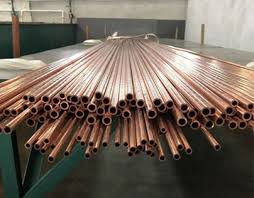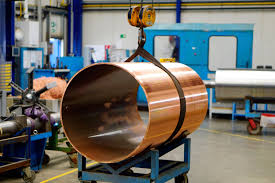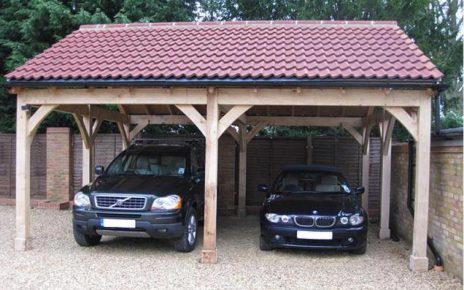Copper plumbing tubes are one of those products that we take for granted. This is understandable, since most of them are hidden behind walls and we don’t see them. Or, because copper plumbing has existed for as long as anyone can remember. It is durable. It is likely that if you are aware of an old building with original plumbing that dates back 65 years, the plumbing will be copper.

Raw Materials
Copper scrap, cathode (also known as cathode or cathode copper) or ingots are the raw materials used to make copper plumbing tubes. As we will explain in a moment, the choice of raw materials depends on factors like cost, availability and technical capability of the melting furnaces at the plant. For information on Copper Pipe products, contact https://watkinspowis.co.uk/products/copper-pipe-fittings-and-press-systems/
Melting
In a large tube-mill, the furnace can hold up to twenty tons of metal. If the raw materials consist only of cathode or refined ingots, then a simple shaft-type furnace will suffice. This type of shaft furnace is not suitable for refining metal.
The copper is refined in reverberatory furnaces or hearth furnaces if the raw material includes scrap other than household scrap.
Casting
Most mills transfer the molten metal from the melting/refining oven into a holding or tundish. This acts as a reservoir, which allows the melting/refining to process the next charge. The holding furnace/tundish has just enough heat to keep the molten steel at a constant temp. The graphite can be used to cover the surface of the liquid metal in order to protect it from oxidation.
The copper is then cast in large “logs”, either by the semi-continuous or continuous method, from the holding furnace.
Piercing
Next, the billets are reheated to about 1535 deg F to make them pliable. The piercing rod, also known as a mandrel, is driven through the middle of the billets in order to form the inner wall of the tube. This step is obviously not necessary if the billets have been cast as round tubes. Piercing may be done either before or after extrusion.

Extrusion
Extrusion can be compared to squeezing the toothpaste out of a tube. The billet is heated up to the correct temperature for hot working and then placed into the extrusion chamber. A horizontally mounted chamber has a die on one end, and a hydraulically powered ram on the other. The copper is forced through the die and over the mandrel as the ram moves. This produces a hollow tube.
Final Steps
The tube is almost ready to ship. The tube can be cleaned to remove any trace of drawing lubricants, or other contaminants. It is especially important to do this for products that are intended for a specific purpose, such as tubes designed to transport medical gases or refrigerants in cooling applications.



